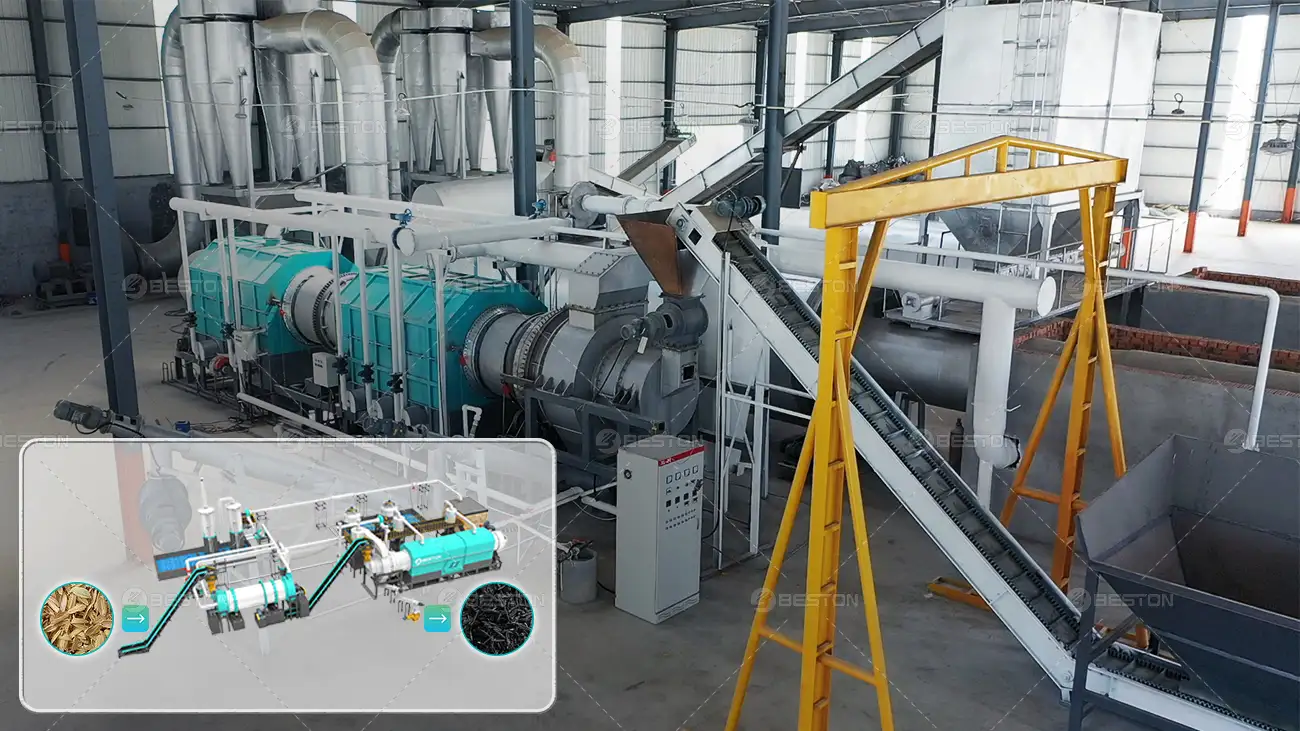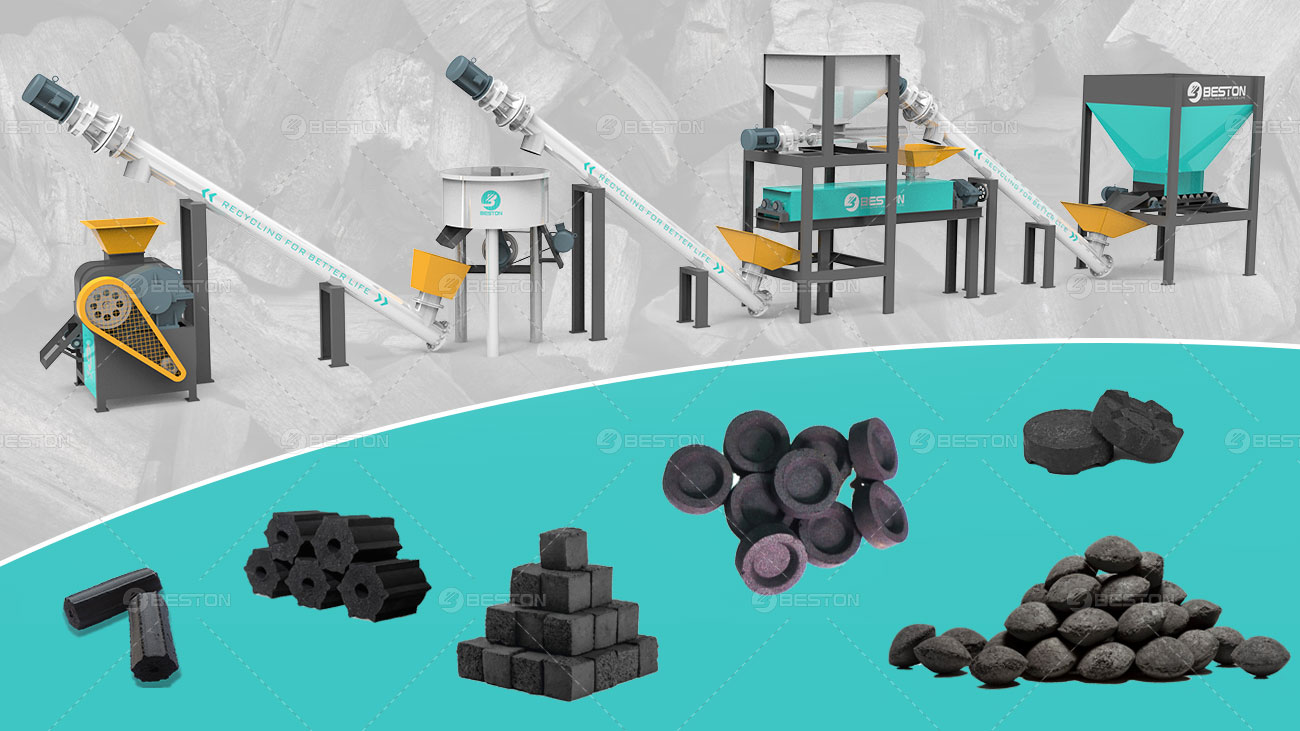The conversion of rice husks into charcoal briquettes is an efficient process that helps address both waste disposal issues and the demand for alternative energy sources. Rice husks, a byproduct of rice milling, are often discarded or burned, contributing to environmental pollution. However, through a well-established production process, these husks can be transformed into a valuable product: charcoal briquettes. This process typically involves several key steps, utilizing specialized equipment such as a rice husk carbonizer and a charcoal briquette maker to achieve optimal results.

Step 1: Collection and Preparation of Rice Husk
The first step in the production of rice husk charcoal briquettes is the collection of rice husks. These husks are generally sourced from rice mills, where they are considered a byproduct of rice processing. Before they can be used in charcoal production, the husks are cleaned to remove any impurities such as dust, stones, and dirt. This step ensures that only high-quality rice husks are used in the rice husk carbonizer, which will ultimately affect the quality of the final charcoal briquette.
Once cleaned, the husks are then dried to reduce their moisture content. Ideally, rice husks should have a moisture level of less than 15%, as excess moisture can interfere with the carbonization process and reduce the efficiency of the entire operation.
Step 2: Carbonization with a Rice Husk Carbonizer
The next stage in the production process is the carbonization of the rice husks. Carbonization is the process by which the organic material is heated in the absence of oxygen, leading to the breakdown of its chemical structure and the production of biochar. In this case, the rice husks are placed in a specialized rice husk carbonizer, which is designed to heat the material to temperatures ranging from 400 to 600 degrees Celsius.
During the carbonization process, the rice husks are converted into charcoal, while the volatile gases, liquids, and tar are released. These byproducts can be captured and either used as fuel or processed further, ensuring minimal waste. The biochar plant can be designed for continuous or batch operations, with the former providing a more streamlined and efficient method of processing large volumes of rice husks.
The carbonization process generally lasts for several hours, and once completed, the resulting rice husk charcoal is removed from the carbonizer. At this point, the charcoal has high carbon content, making it an ideal material for further processing into charcoal briquettes.
Step 3: Crushing and Grinding of Charcoal
After carbonization, the rice husk charcoal is still in large, irregular chunks, which are not suitable for briquette formation. To make it suitable for briquette production, the charcoal must first be crushed and ground into a fine powder. This is typically done using a grinder or crusher. The particle size of the crushed charcoal should be fine enough to allow for proper binding when mixed with other ingredients during the briquetting process.
Additionally, any leftover impurities or larger pieces of uncarbonized husk are removed during this stage. The result is a uniform, fine charcoal powder, which will serve as the base material for charcoal briquette maker.
Step 4: Mixing with Binder and Additives
Once the rice husk charcoal powder is ready, it is mixed with binders and other additives to improve the cohesiveness and performance of the final briquettes. The binder, often a starch-based substance or a natural resin, helps hold the charcoal particles together and prevents them from falling apart. Some producers may also add other materials, such as sawdust, clay, or limestone, to modify the properties of the briquettes, such as increasing their durability or enhancing their burn rate.
The mixture is thoroughly blended to ensure that the binder is evenly distributed throughout the charcoal powder. This step is crucial for achieving high-quality briquettes that will burn efficiently and consistently.
Step 5: Briquetting with a Charcoal Briquette Maker
Once the charcoal mixture is ready, it is fed into a charcoal briquette maker, a specialized machine that forms the mixture into uniform briquettes. The briquette maker uses high pressure to compress the charcoal powder and binder into compact shapes, such as round or hexagonal discs, or other custom forms depending on the market’s demand.
The pressure applied during briquetting is critical to achieving the right density, which will determine how well the briquettes burn and their overall strength. Properly made briquettes should have good structural integrity, ensuring they do not easily crumble during handling or transportation. To get high quality output, you can buy the Beston charcoal making machine.

Step 6: Drying the Charcoal Briquettes
After the briquettes have been formed, they are still damp due to the moisture content from the binder and additives. These briquettes need to be dried to reduce their moisture content and increase their burning efficiency. The drying process can be done naturally in the sun, but for faster results, mechanical dryers or drying kilns are often used to expedite the process.
The moisture content of the dried briquettes should ideally be below 10%, as this ensures the briquettes burn efficiently and do not release excessive smoke or pollutants when used.
Step 7: Packaging and Storage
Once the charcoal briquettes are completely dried, they are ready for packaging. Depending on the intended market, the briquettes may be packaged in bulk or in smaller, consumer-friendly bags. Proper packaging is essential to protect the briquettes from moisture and physical damage during transportation and storage.
The final product is now ready to be distributed to retailers, wholesalers, or consumers who will use the rice husk charcoal briquettes for cooking, heating, or industrial purposes.
Benefits of Rice Husk Charcoal Briquettes
The production of rice husk charcoal briquettes provides multiple benefits, both environmentally and economically. It reduces the waste produced by rice mills and offers an alternative, sustainable fuel source. Briquettes made from rice husk charcoal burn more cleanly than raw rice husks, emitting fewer pollutants and particulates. Additionally, they offer a higher energy density compared to traditional firewood, making them an efficient fuel option for households and industries alike.
Moreover, the charcoal briquettes produced from rice husks have a lower carbon footprint, making them a more environmentally friendly option compared to fossil fuels or non-sustainable wood-based charcoal. The use of a rice husk carbonizer and charcoal briquette maker ensures that the production process is both efficient and environmentally responsible, creating a valuable product from agricultural waste.